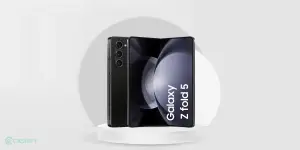Stop talking about the Metaverse and find out what happened to the AR-VR explosion that had people excited a few years ago when they started experiencing real-world settings in 3D through wearable headsets. In India, AR-VR headsets were previously ubiquitous, with oval-shaped VR stations requiring students to wear HMDs to enjoy immersive worlds like automobile racing or jungle terror.
The initial excitement faded rapidly, and most VR stores closed during the final two years of the epidemic. During the same period, India alone has over 500 million smartphone users. AR-VR has failed to affect the consumer and corporate markets significantly despite its six-year arrival, but things are progressively improving.
Also Read:
7 Best Music Software For Mac Ideal For Recording And Editing
According to IDC, the global market for AR/VR headsets surged 92.1 per cent year-on-year in 2021, shipping 11.2 million units. Although “AR headsets continue to constitute a modest part of the entire AR/VR headset market,” Tom Mainelli, IDC’s group vice president, Device & Consumer Research.
“We don’t anticipate this frothy behaviour to harm headset volumes soon,” says Metaverse. Meanwhile, consumers reported mental exhaustion, headaches/eye strain, nausea, and other health concerns when using VR headgear.
In the ‘hybrid normal,’ your virtual avatars will traverse numerous settings like meetings in offices, sunbathing on beaches, or shopping in malls, mirroring real life. But, despite the worldwide buzz, the Metaverse, or 3D experience layer of the Internet, is not yet here, according to Forrester’s J.P. Gownder.
Also Read:
Apple Music Vs Spotify- Is Apple Music Better Than Spotify
More On Metaverse with AR-VR!
“In the near term, metaverse hype has exceeded public interest—long time to build Metaverse. “The metaverse doesn’t exist yet because experiences aren’t interoperable,” Gownder told IANS. An immersive experience of interoperable and connected worlds offered through various devices — from smartphones and VR headsets to other form factors not yet imagined — is required.
Also Read:
Much Awaited iPad Calculator Is Here, And We Can’t Keep Calm
Enterprises will adopt metaverse precursor technology faster than consumers, says Gownder. Last month, Snap CEO Evan Spiegel slammed Metaverse, calling it “pretty unclear and hypothetical”, an apparent swipe at Facebook CEO Mark Zuckerberg, who has spent billions on Metaverse.
A retail shop selling Meta’s AR-VR headgear Quest 2, Quest 2 accessories, and Portal smart video devices will open on April 9. According to a Gartner research from February, 35 per cent of customers had never heard of Metaverse.
Nearly 58 per cent of those polled had heard of Metaverse but had no idea. Only 6 per cent of those surveyed felt confident enough in their metaverse knowledge to describe it to others. Nearly 21per cent are worried about the Metaverse’s influence.
Also Read:
Samsung Wireless Charging 101: Everything About Samsung Wireless Chargers
Is there anything more?
“Most individuals don’t have time to contemplate the metaverse,” said Kyle Rees, senior director and analyst at Gartner. But, according to Adobe India Vice President and Managing Director Prativa Mohapatra, the Metaverse is still a buzzword.
“In the Metaverse, we are currently interacting, meeting, touring, etc. However, how much of this will people accept is unknown. “Collaborating in metaverse-style situations will become more important for a remote and hybrid workforce in the pandemic,” Mohapatra told IANS.
Consumer experiences will take longer to evolve to the point where a broad market wants to participate, according to Gownder.
Also Read:
How to Download and Install COD Mobile Mod APK
“Today, gamers and extremely young customers spend the most time in virtual worlds,” he added. Virtual or augmented worlds, game settings, and development tools are pre-metaverse activations. According to Gownder, the Metaverse necessitates regulatory norms, privacy rules of behaviour, and inclusive UX design.











